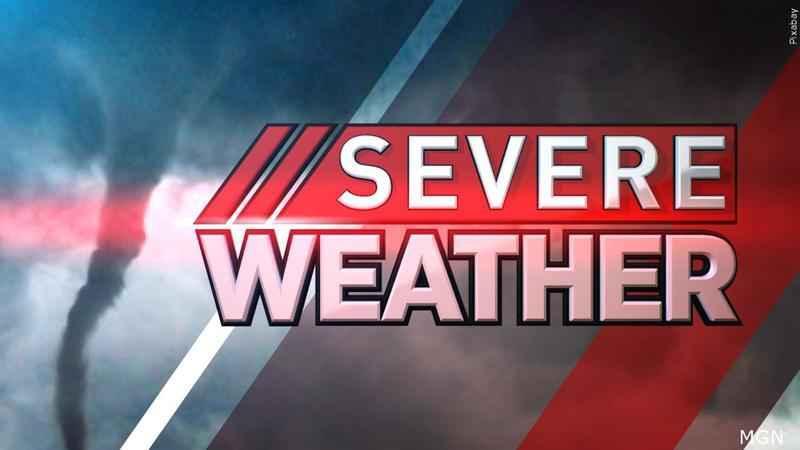Severe Weather Awareness Week in Minnesota, Wisconsin
[anvplayer video=”5100483″ station=”998130″]
Although most of the Northland currently has fresh snow on the ground, it is time to start preparing for severe weather. This week is Severe Weather Awareness Week for both Minnesota and Wisconsin.
Severe Weather Awareness Week is hosted by the National Weather Service and Homeland Security and Emergency Management each year in order to provide the public with information and education about severe weather threats that impact the region.
Wisconsin Governor Tony Evers has officially proclaimed April 4-8 as Tornado and Severe Weather Awareness Week in the state, joining forces with ReadyWisconsin.
“Severe weather can include several hazardous conditions produced by thunderstorms, such as damaging wind, tornadoes, hail, and flooding,” said Greg Engle, acting Wisconsin Emergency Management administrator. “Now is the time to be prepared, be aware, and be ready before a disaster occurs.”
Each day of Severe Weather Awareness has a different focus. Monday’s theme was alerts and warnings, with information and education being focused on the types of alerts and the difference between a watch and a warning. Tuesday’s focus is on severe weather such as lightning, hail, and severe thunderstorms. Wednesday will be all about flooding.

“We’ve seen a lot of flooding here in Duluth locally, whether that’s in a river or a stream or then, of course, down at the Canal Park is an area where we’ve seen flooding in the past," said Duluth Fire Department Chief Shawn Krizaj. "We’re hoping that a lot of our shoreline resiliency build up that we’ve done in the past few years will help out.”
Thursday’s theme will be tornado awareness.
“We don’t think of Duluth as a real big area for tornadoes, kind of more of a southern Minnesota thing," said Krizaj. "But we certainly have straight line winds and other really hazardous situations where we clocked wind speeds of over 100 miles an hour frequently, whether that’s right here in town or just north of town or again in the boundary waters or some some of the other areas around.”
Wisconsin averages 23 tornadoes per year, but in 2021, 41 tornadoes were confirmed by the National Weather Service to have touched down in Wisconsin. In Minnesota, the state average is 29 tornadoes per year. In 2021, 37 tornadoes touched down in the state.
The busiest time for tornadoes is typically during the spring and summer months, but they can happen any time of the year. In Minnesota, tornadoes have occurred every month from March to November. In Wisconsin, tornadoes have occurred every month except February. December 2021 had 10 tornado touchdowns reported in a single day in Wisconsin.
According to the Minnesota DNR, June is the month of greatest tornado frequency in Minnesota both historically and statistically, with 37% of all tornadoes occurring that month. July is not far behind with 25% of Minnesotan tornadoes. May has the third greatest frequency at 15%.
To stay safe from severe weather, ReadyWisconsin encourages the following:
- Create an emergency plan and practice it.
- Know where designated shelters are located at home, work, and school, and be ready to go there when a tornado warning is issued.
- Have multiple ways to receive alerts about approaching severe weather. Outdoor warning sirens, a NOAA Weather Radio, local media, and smartphone apps are all important tools. Don’t rely on any single source for important life-saving information.
- Make sure your mobile device is enabled to receive Wireless Emergency Alerts. On many devices, that option is available in the settings menu.
- Keep up to date on the daily forecast for your area.
- Create an emergency kit for your home. Find tips for building a kit at https://readywisconsin.wi.gov
Both Minnesota and Wisconsin will be conducting their annual statewide tornado drill at 1:45pm and 6:45pm on Thursday, April 7. The drill will be postponed to April 8 if there is severe weather anywhere in the state on April 7. If you are able to participate, everyone is encouraged to pause what they are doing and practice going to their designated shelter location.
“Make sure you actually know where that place is, and if it’s in your home, make sure everyone in your home and elsewhere where it is, including children or elderly, if you live with elderly people," explained Krizaj. "Make sure everybody knows because there is possibility that you might not always have time to get everybody or maybe you’re not together.”
The National Weather Service will be conducting NOAA Weather Radio tests during the designated drill times. Some communities may also test their outdoor warning sirens.
“Being prepared for tornadoes and severe weather goes beyond Tornado and Severe Weather Awareness Week,” said Engle. “It’s a year-round effort, and how well you prepare for a disaster today can impact your ability to recover tomorrow.”
Severe Weather Awareness Week will end with a focus on extreme heat on Friday.
“As we see people that are starting to train for things like Grandma’s Marathon or possibly a bike race or some of the other outdoor activities that we have here is just to remind people, stay hydrated," said Krizaj. "Sometimes it’s not always that hot, hot, hot day that you’re used to, but it can still be dangerous.”
Throughout the month of April, the National Weather Service office in Duluth is partnering with local county Emergency Managers across the Northland to offer Skywarn Spotter Training. More information can be found here.